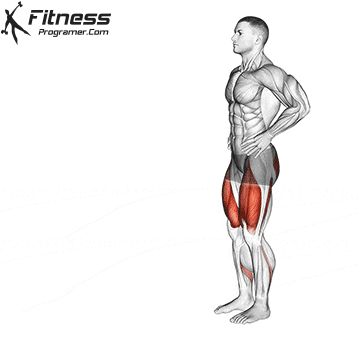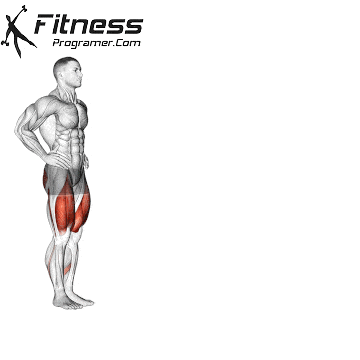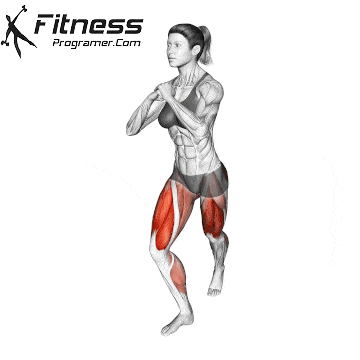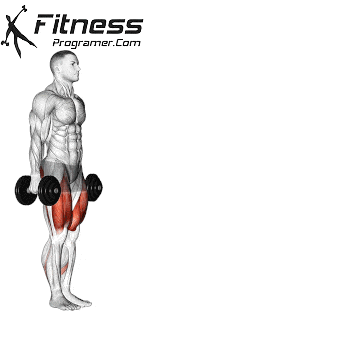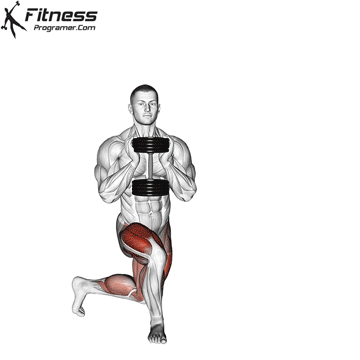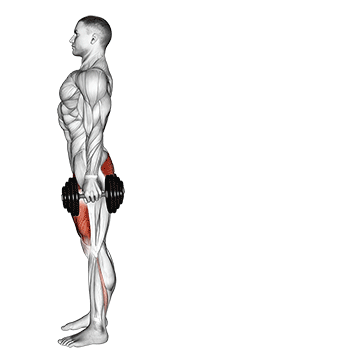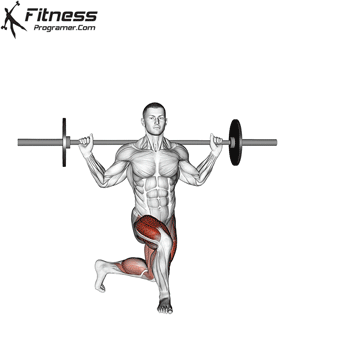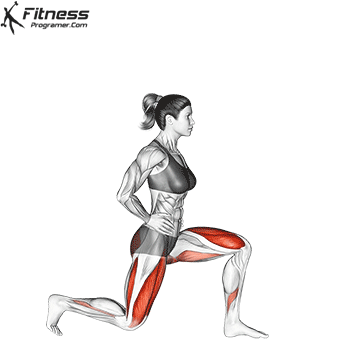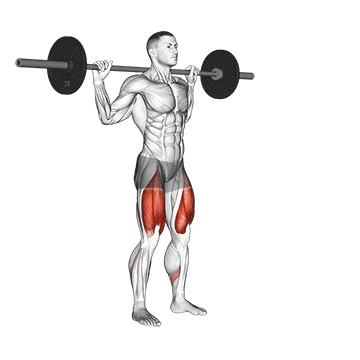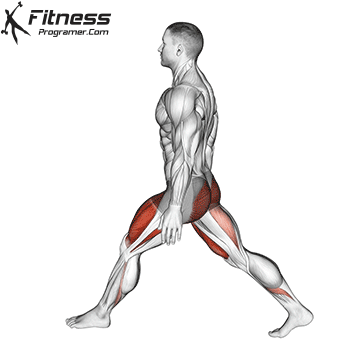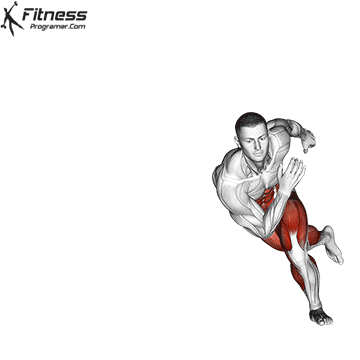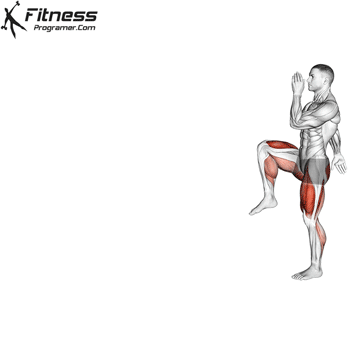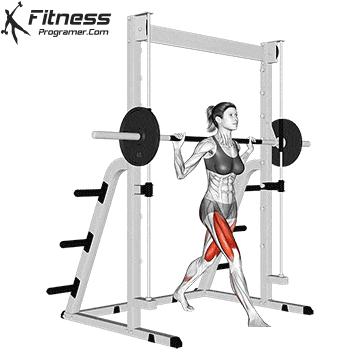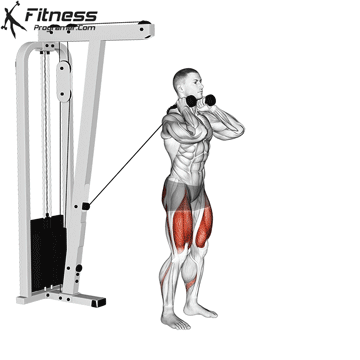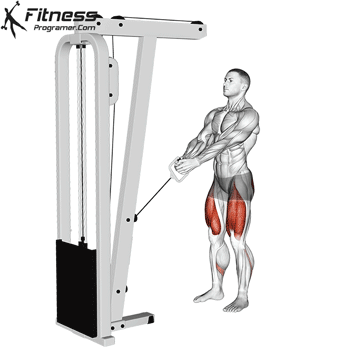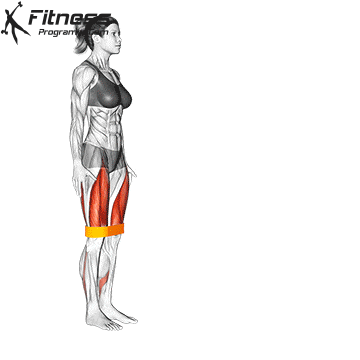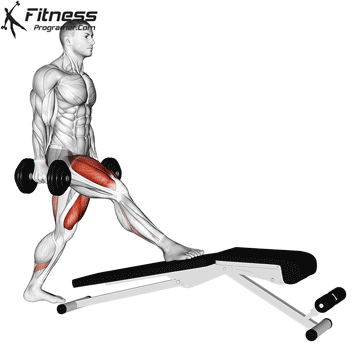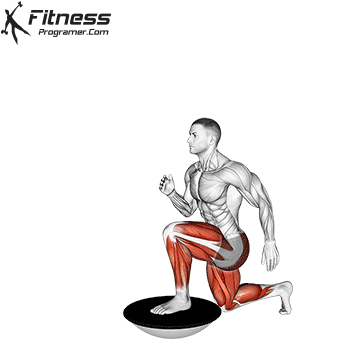Overview
A static lunge, also known as a stationary lunge, is a variation of the lunge exercise. It’s called “static” because, unlike the traditional lunge where you step forward or backward, in a static lunge, you remain in one position throughout the exercise. Static lunges are effective for building strength and stability in the lower body, and they can also help improve balance.
How to perform Static Lunge
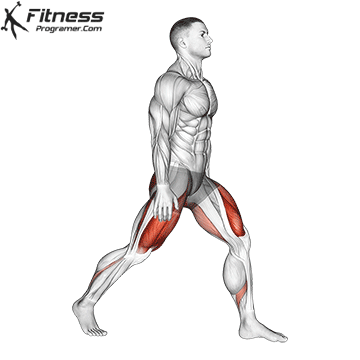
- Stand with your feet hip-width apart.
- Take a step forward with one foot, and then take a larger step backward with your other foot. Your feet should be positioned so that when you lower your body into the lunge, both knees form 90-degree angles.
- Keep your torso upright with your chest lifted and your shoulders relaxed. Your core should be engaged for stability.
- Lower your body by bending both knees simultaneously.
- Hold the lowered position for a moment, and then push through the heel of your front foot to return to the starting position.
- Repeat the movement for the desired number of repetitions on one leg before switching to the other leg.
Tips for Proper Form
Keep your front knee aligned with your toes, not letting it collapse inward.
Maintain a tall posture with your chest lifted and back straight.
Engage your core for balance and stability.
Push through the heel of your front foot to activate the glutes.
Keep both feet flat on the floor for proper support.
Common Mistakes
Letting the front knee go past the toes, which can strain the knee.
Hunching forward, reducing the effectiveness of the lunge.
Placing the feet too close together, which affects stability.
Allowing the back heel to lift, which throws off balance.
Rushing the movement, rather than using controlled motion.
Benefits of the Static Lunge
Builds unilateral leg strength: Targets each leg independently, helping to correct muscle imbalances.
Improves balance and coordination: The fixed stance challenges your ability to stabilize during movement.
Enhances hip and ankle mobility: Encourages a greater range of motion in the lower body joints.
Develops lower body muscle tone: Engages quads, hamstrings, and glutes through full-range contraction.
Low-impact and joint-friendly: Reduces the risk of excessive strain compared to high-impact plyometric lunges.
Supports injury prevention: Strengthening stabilizer muscles around the knee and hip helps protect joints.
Easily modified for any level: Progress by adding weights or regress by holding onto a support for balance.
How to Incorporate Into Your Routine
- For Beginners: Perform 2 to 3 sets of 8 to 10 reps per leg using bodyweight.
- For Hypertrophy: Use dumbbells or a barbell for 3 to 4 sets of 10 to 12 reps.
- For Strength: Do 4 sets of 6 to 8 reps with heavier weight and full range of motion.
- For Functional Training: Pair with core or balance drills for a multi-plane workout.
- For Circuit Training: Add to a full-body or lower body circuit for time or reps.
- For General Fitness: Include 2 to 3 sets as part of a weekly leg workout for tone and control.
- For Mobility Work: Use as a hold-based lunge stretch to improve hip and quad flexibility.
Static Lunge Muscles Worked
It primarily targets the muscles in the legs, including the quadriceps, hamstrings, and glutes. The muscles worked during static lunges include:
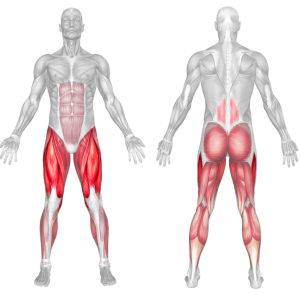
Frequently Asked Questions
Can beginners do static lunges?
Yes, it is a great introduction to unilateral leg training and can be performed with bodyweight alone.
What equipment do I need?
None to start. Dumbbells or kettlebells can be added for resistance as you progress.
Are static lunges better than walking lunges?
Static lunges offer more control and are safer for beginners. Walking lunges involve more coordination and balance.
Can I use this in rehab or post-injury training?
Yes, with proper supervision and modification, static lunges are excellent for regaining strength and control.
Static Lunge Variations
Static lunges are quite versatile and can be modified in various ways to suit different fitness levels and goals. By incorporating the lunge variations found in the list below, you can target different muscles and add variety to your workouts.

